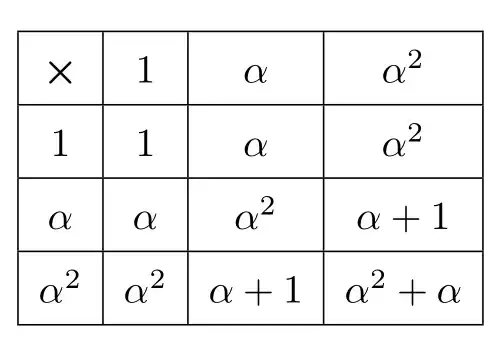$F\cong \mathbb{Z}/2\mathbb{Z}[X]/(f)$ since $f$ is irreducible in $\mathbb{Z}/2\mathbb{Z}[X]$. Multiplation in $F$ is modulo $f(\alpha)$ and of characteristic $2$ (on the coefficients of $\alpha$). There should be $8$ elements as $2^3=8$ (this is a degree $3$ field extension) and as Gamamal has said, the nonzero ones will form a cyclic group.
Example:
Take $p(X)\in \mathbb{Z}/2\mathbb{Z}[X]$ and by the division algorithm, find the remainder after division by $f(X)$. This will be a polynomial of degree less than $3$. Since our field is finite, we can write all $8$ of these remainders. Wherever there is an $X$, put an $\alpha$ (as this is it's image under the mapping).
Choose two elements, say $\alpha^2+1$ and $\alpha$. We have $$(\alpha^2+1)\alpha=\alpha^3+\alpha$$
Also, $\alpha$ is a root of $f$ so it satisfies the relation $\alpha^3+\alpha +1=0$. Subtraction by $0$ gives $$(\alpha^3+\alpha)-0$$$$=(\alpha^3+\alpha)+(-\alpha^3-\alpha-1)$$$$=-1$$$$=1$$
Remembering which field the coefficients are in.
